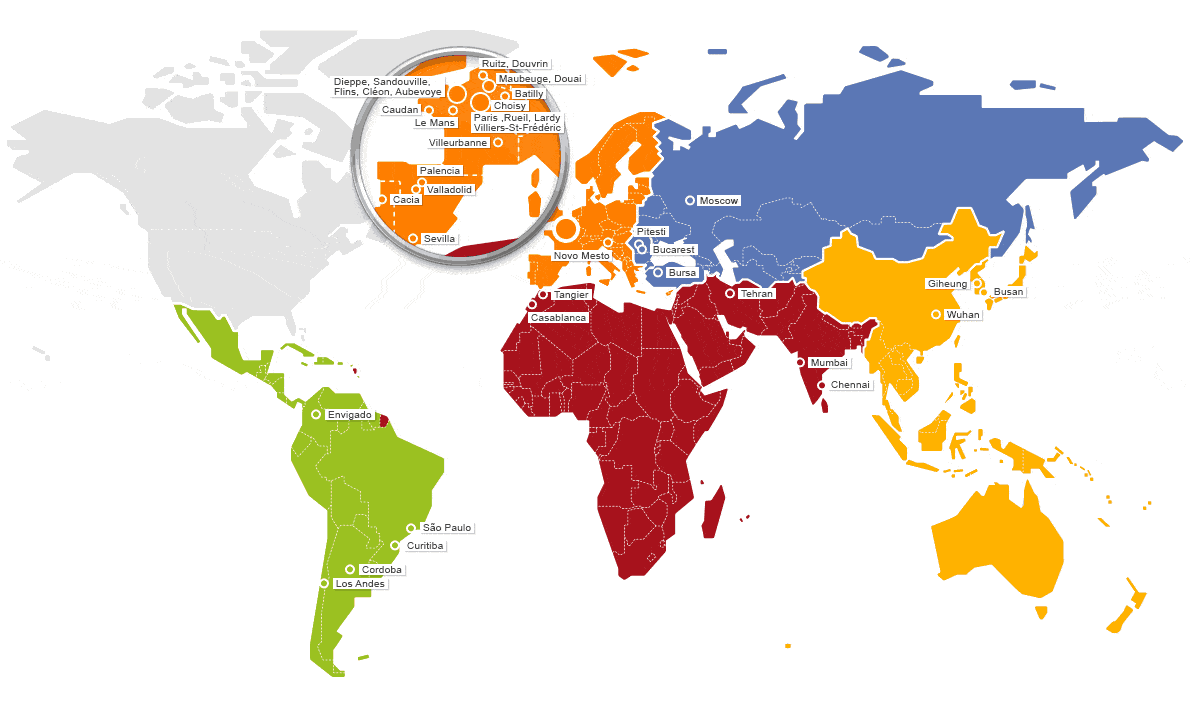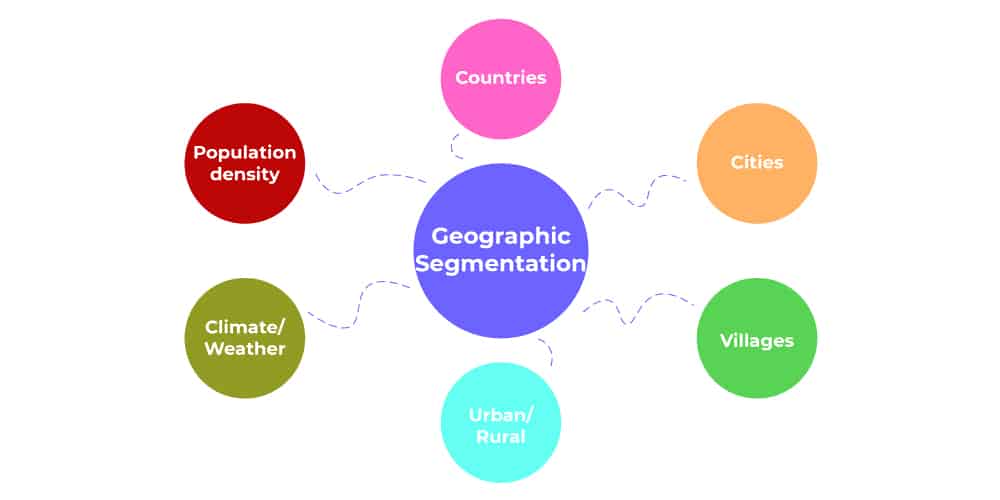What is Geographic Segmentation?
Market Segmentation is a method used by marketers to divide a target market into smaller groups based on common characteristics, in hopes of marketing more effectively to each group. Marketers know that individual consumers have wants and needs that are linked to their demographic and psychographic characteristics, past interactions with a company or brand, and the place where they live. Marketing segmentation tries to identify groups of people with similar wants and needs so that marketers can produce targeted messages that appeal to them.
Geographic segmentation is a type of market segmentation that groups prospective customers based on where they live. People living in the same environment tend to have similar wants and needs, and geographic segmentation allows marketers to target audiences in a country, city or region with messaging that appeals to their specific wants and needs.

Why is Geographic Segmentation Important?
Effective geographic segmentation is a crucial component of any marketing campaign. It ensures that marketing dollars are appropriately spent on targeting prospective customers with the most relevant message that appeals to their needs and is most likely to trigger purchasing behaviors. Without geographic segmentation, consumers would frequently encounter advertisements for products and services that are unavailable where they live.
Let’s consider two examples: a local pizza restaurant and a Fortune 500 software company.
A small restaurant may have a limited marketing budget, making it vitally important to get the most value for every dollar of marketing spend. To achieve this, marketing efforts must be highly targeted toward customers in the restaurant’s delivery area. If a restaurant in Denver is paying to advertise to consumers in Aspen, that money is wasted, because nobody is driving six hours to get a pizza. Effective geographic segmentation can help this restaurant identify and market to potential customers in the target region.
A Fortune 500 software company will have a bigger marketing budget, but effective geographic segmentation will be crucial in maximizing return on investment. International organizations face the challenge of marketing to companies and individuals in different countries around the world with different wants and needs, different languages and ways of communicating, different business cultures, different values, and preferences, etc. An advertisement that works well in America may not work at all in Europe or Asia. With geographic segmentation, this company could divide its target market by country and produce targeted advertisements to appeal to prospective customers in each nation.
Geographic Segmentation vs Demographic Segmentation - What's the Difference?
Geographic segmentation is not the only type of marketing segmentation – in fact, there are three other types that are commonly applied to help identify groups of customers with common characteristics: demographic, psychographic and behavioral segmentation.
Demographic segmentation divides a target market into different groups based on statistical data. This data can include things like age, gender, family situation, location, income, education level, ethnicity, and other factors. Companies can access demographic information about consumers through different sources, including through the United States Census Bureau, the Small Business Administration Office of Entrepreneurship, through market research websites, or from companies that do public polling.
Psychographic segmentation tries to divide a target market into categories based on psychological characteristics such as traits, values, motivations, beliefs, interests, and lifestyles. This data is not readily available, so organizations may have to conduct in-depth research into their customers to identify and accurately understand psychographic segments.
In B2B sales, target prospects may have different psychological influences and motivations depending on their roles and responsibilities. A sales manager might be motivated to maximize revenue, while a COO is motivated to maximize operational efficiency and a CFO wants to achieve great financial results. Dividing customer segments by their shared needs and values is psychographic segmentation.
Behavioral segmentation is the practice of grouping target prospects according to their past interactions with the marketing organization. This common practice requires marketing organizations to effectively track interactions between individual prospects and the brand across multiple marketing touchpoints. Marketers may group consumers according to their brand interactions, behavior on a website, purchasing patterns, or spending habits.

How Does Geographic Segmentation Work?
Geographic segmentation is all about grouping target consumers based on their shared geographical characteristics. The core assumption of geographic segmentation is that a consumer’s needs and wants can vary based on their location, and that grouping people by location can help marketers deliver more relevant content that addresses the needs of consumers in a specific place. There are several geographical parameters that can be used to identify and delineate customer segments in order to deliver more targeted advertisements.
Country
Some companies only do business in one country and need to concentrate their marketing efforts there. Other companies are international and may develop strategies to market to consumers in different countries or to enter a new international market.
City
A company may go to preferentially target people that live in a specific city. Cities have greater population density than suburban or rural areas, enabling companies that sell physical products to distribute to more people for a lower cost by targeting cities. Marketing preferentially to cities is effective for firms whose distribution infrastructure is concentrated in urban centers.
Urban/Suburban/Rural
Some companies may choose to market their products differently to customers living in urban, suburban and rural environments. This reflects the reality that our environments affect how we perceive and interact with certain products and services.
A car company might market to urban populations by highlighting safety features like lane change alerts and back-up cameras that help avoid collisions when there are many other vehicles around. For suburban populations, the same company might emphasize fuel economy and spaciousness (room for family), knowing that this target market will use the car for commuting to work each day and bringing the kids to soccer practice. For rural customers, marketing messages might focus on comfort and durability.
Climate & Weather
Some companies sell seasonal products like winter tires, but it makes no sense to advertise winter tires in California. Geographic segmentation helps companies that sell seasonal products access the right audience at the right time where the product is needed.
Directive Consulting Uses Geographic Segmentation to Drive Marketing ROI
Geographic segmentation is one of the best ways of sending more targeted marketing messages to your prospective customers that help improve conversions and drive revenue. Geographic segmentation is also easier and cheaper to do than demographic, psychographic or behavioral segmentation while offering many of the same benefits.
For businesses that operate in a defined target area, geographic segmentation helps ensure that marketing funds are appropriately spent on reaching local prospects. For larger companies, geographic segmentation helps ensure that prospective consumers across the world receive targeted and relevant marketing content that is more likely to lead to purchasing behaviors.
We apply our Customer Generation methodology to optimize marketing spend and target the most profitable marketing channels, ensuring that our customers achieve revenue targets while increasing marketing efficiency, every time. To learn how we can increase the efficiency of your next marketing campaign with geographic segmentation, book a call with our expert team of tech marketers to get a custom proposal.


